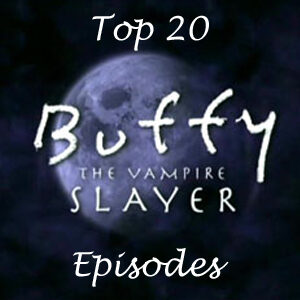Holy cow – or should I say “unholy cow” – “The First Omen” is actually a worthy prequel to Richard Donner’s 1976 classic “The Omen,” one of the touchstones of religious horror. Through most of its 2 hours, it’s stylistically engrossing under the guidance of director/co-writer Arkasha Stevenson. (More on the narrative choices of the four-writer screenplay later.)
“The First Omen” is set in 1971, the year of Damien’s birth in the timeline of 1976’s “The Omen.” Gorgeous filming locations in Rome, set designs and cinematography by Aaron Morton believably capture the time and place. Stevenson mimics the directing styles of the era, such as harshly framed shots divided precisely down the middle by an architectural column or a statue. She employs zooms and pans, including a marvelous swirling overhead shot of the city at twilight.
The cleverest trick to capturing the Seventies vibe might be the casting. “The First Omen’s” cast features many off-kilter traits, such as the uniquely deep voice of Ralph Ineson (who plays Father Brennen, the main link to “The Omen” ’76) or the sharp Italian accent of Sonia Braga (as Sister Silva, the head of the convent).
“The First Omen” (2024)
Director: Arkasha Stevenson
Writers: Tim Smith, Arkasha Stevenson, Keith Thomas (screenplay), Ben Jacoby (story)
Stars: Nell Tiger Free, Ralph Ineson, Sonia Braga
These actors, along with others who look or sound different from the Hollywood norm, keep us off-balance. Meanwhile, providing grounding of a sort is nun-to-be Margaret, played by the rangy Nell Tiger Free, who likely got this role based on TV’s “The Servant,” where she’s also in the eye of a bizarre narrative storm. Margaret is a likable, sympathetic audience surrogate.
Mood and intrigue
Initially, “The First Omen” is driven by mood and the harshly drawn theme that the Church will do anything to stay in power. In some ways, sure, this is a prequel that explains things that don’t need to be explained. Yet Stevenson and company are so obviously interested in making this movie good that it’s automatically head and shoulders above cash-in fare such as the execrable “Exorcist: Believer.”
Gradually, Margaret – haunted by visions that may be random hallucinations but are likely prophetical (since we’re watching a religious horror film) — slots into “Omen” lore, and I can’t deny that this provides momentum-laden intrigue.
But it also leads to plot holes when lined up with “The Omen” ’76. On the other hand, these plot holes are not massive. They could be ironed out by future films, and indeed, the ending of “The First Omen” promises sequels.

Before I get into the spoiler section, I should note that “The Omen” saga has never cared about having a consistent timeline. Damien is 5 in 1976, 13 in 1978’s “Damien: Omen II,” 32 in 1981’s “The Final Conflict,” and 30 in 2016’s “Damien” TV series. However, “The First Omen” initially suggests it will care about continuity, since it is set in 1971, the year Damien is born if we go by the 1976 film.
(SPOILERS FOLLOW.)
Day of the jackal (Spoilers)
But then we learn Damien is birthed by Margaret, who had been raped by a demonic version of a jackal. In the O.G. lore, of course, Damien’s mother is a jackal, and his father is Satan. One of the most unsettling moments of Donner’s “The Omen” comes when the investigators open the grave of Damien’s mother and see the bones of a jackal.
It’s creepy because our imaginations supply the idea of a baby coming out of an animal (even if a jackal isn’t a creepy animal; it looks sort of like a dog) and also the fact that powerful members of the church oversaw this birth, covered it up, and proceeded to not only protect Damien, but to murder an innocent baby as part of the scheme.
Granted, when we switch to visual creepiness – in which Stevenson willingly toils, despite the aforementioned wonderful Seventies horror trappings – an innocent woman being raped by a demonic jackal is more effective than Satan raping an innocent jackal.
Although not as explicit as in genuine 1970s Italian horror, “The First Omen” brings its frame right up to the edge of naughty sexual bits, shows us the blood and amniotic fluid and other birth-related stuff we’d rather not dwell on, and ties it together with the wrongness of a mother who is either masked or maniacally grinning in the style of the horror flick “Smile.” Maybe the visual grossness is the reason for the narrative switch to a “jackal” father rather than mother.
Combined with a striking sequence of a newly minted nun (Maria Caballero’s Luz, a friend of Margaret’s who enjoys clubbing) having her habit secured to her head with viciously painful pulling of the strings, and “The First Omen” is making points about how the Church turns free women into objects that serve a purpose. And in order to reconcile the plot hole, we simply have to imagine the Church buried the male demon jackal in the grave of the supposed mother jackal, an additional step in its aims of obfuscation.
Overwrought and over-thought? (Spoilers)
Still, there is something irritatingly mundane about this, in the way of prequels that explain everything yet also introduce inconsistencies. A viewer’s brain switches from absorbing the mood to thinking about the narrative, and that’s not a great trade-off.
The ending of “The First Omen” finds that Margaret, young Carlita (Nicole Sorace) – falsely telegraphed as the mother of Damien — and Damien’s twin sister have all survived and gone into hiding. All bear the “666” mark of the Devil and – especially since Free is a solid actress – this could lead to good side-sequels about people overcoming their evil destinies, a contrast to Damien embracing his.
But a question emerges: Why would the Devil-supporting branch of the Church be opposed to their survival? Does it not trust them to be evil? Or does it want only one evil being out there – a number that’s more manageable? Motivations of various movers and shakers become convoluted the more you think about “Omen” lore, and that was the case even before “The First Omen” existed.
So the saga – as a narrative – is in an odd spot. The idea of exploring the generation before Damien wasn’t off-base, as Stevenson proved a good film could result. But now that “The First Omen” introduces a new branch of the lore, I’m thinking more about its potential for confusion than its potential for scares.

